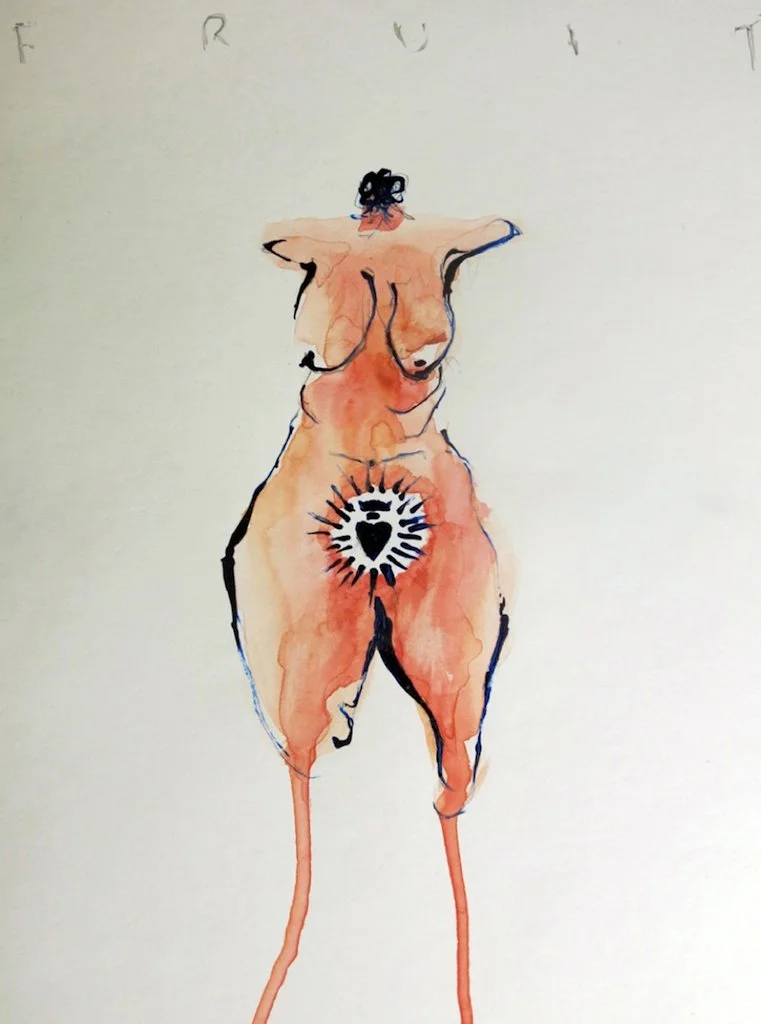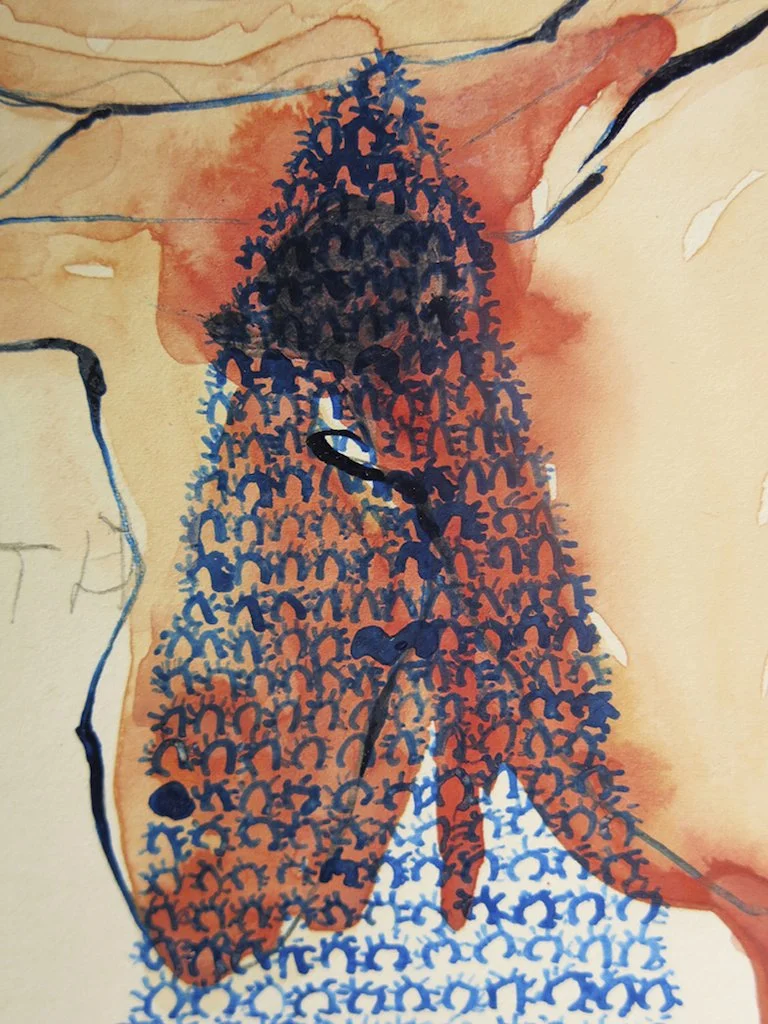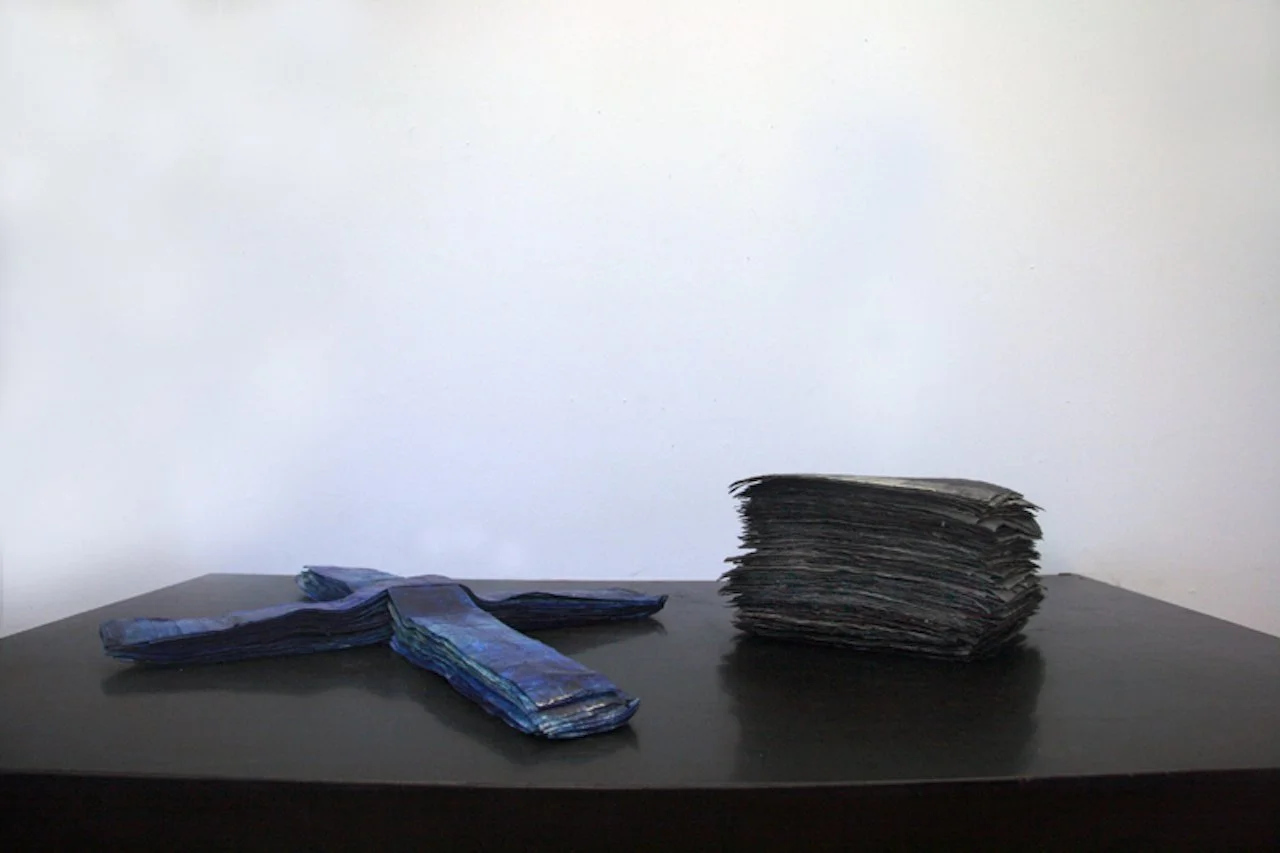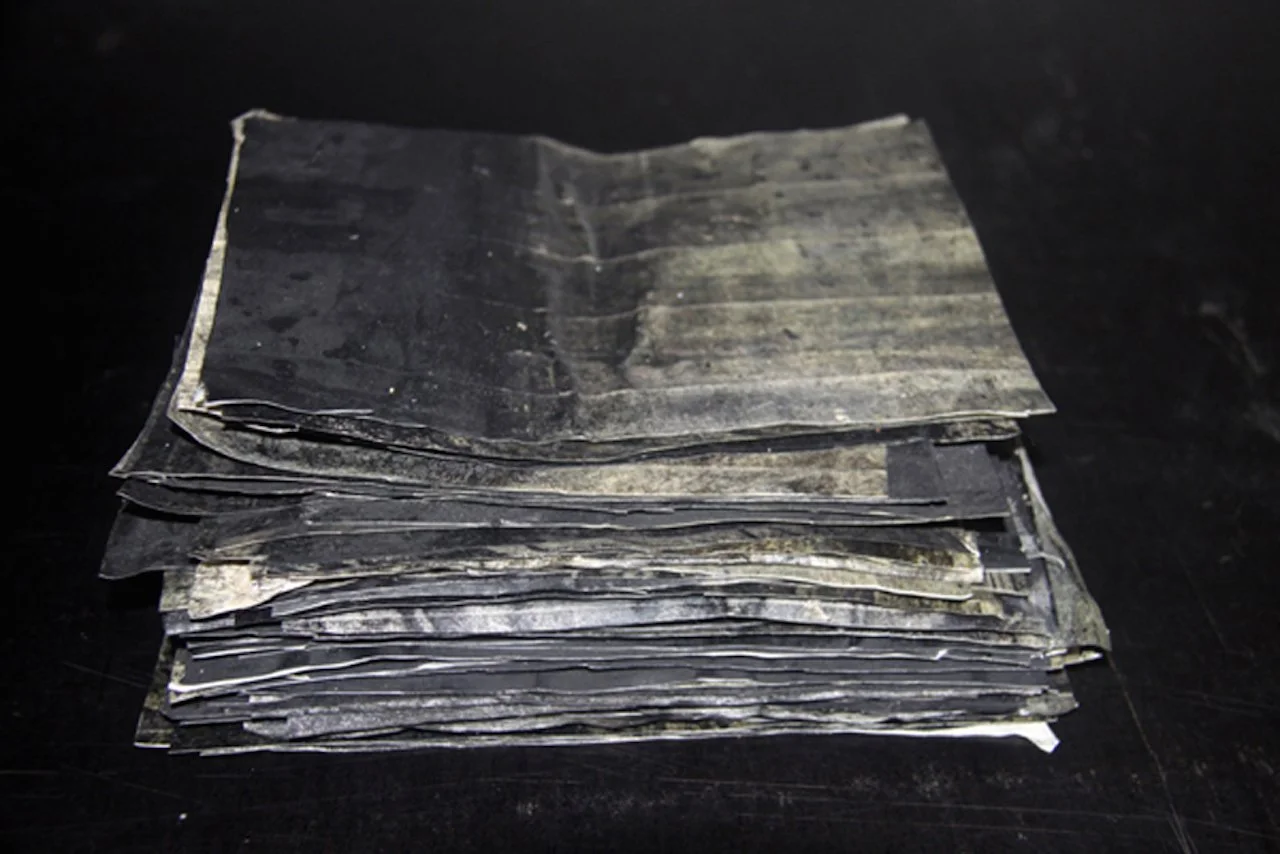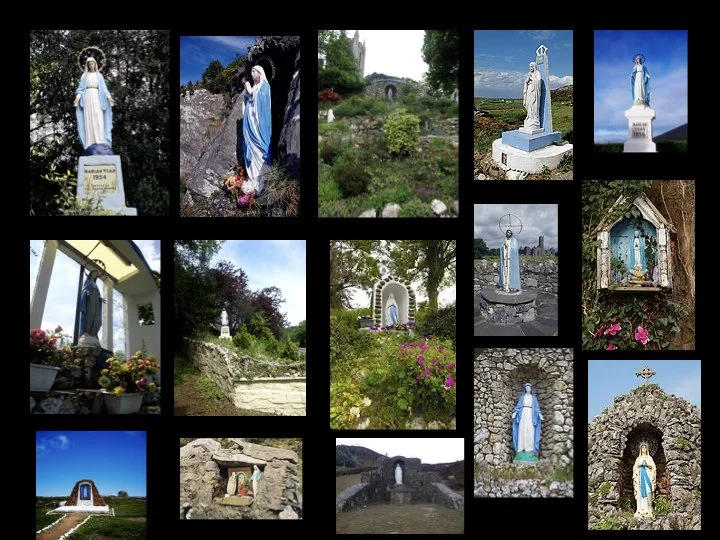'Marian Thread', Visualizing Ireland: Homage to Otherness, 2013 20th Australasian Conference for Irish Studies
The Institute of Global Irish Studies, University of NSW, Sydney, Australia
In this practice led research project, artists Annemarie Murland and Kiera O'Toole collaborate on the complexities of Marian Theology as a framework for examining female sexual identity which are shaped by irish and scottish cultural narratives and personal experience as mediators of exchange, the duo explore the Mary story through their respective art practice. The Marian Thread began with project one entitled Homage to Otherness. In reimagining the figure of Mary, this work seeks to broaden my understanding of the profound effect her image holds for me, and to draw—both literally and figuratively—my own story into the wider narrative thread of Marian iconography.
French literary theorist and psychoanalyst Julia Kristeva argues that the Virgin Mary functions as the dominant, sacrosanct representation of femininity in Western culture, one that is deeply problematic. In her essay Stabat Mater (1985), Kristeva interrogates the Marian ideal, positioning it as a symbolic structure that defines femininity through purity, silence, and suffering. She asks: if Mary is the singular model of womanhood, how can this image account for the diverse, embodied realities of women's lives—including experiences of sexuality, trauma, miscarriage, Caesarean birth, motherhood, and the bodily knowledge these carry? For Kristeva, the icon of Mary erases the lived body in favour of a desexualised, idealised femininity that is both oppressive and exclusionary (Kristeva, 1985).
This work engages with these questions materially and conceptually. It asks whether the figure of Mary can be repositioned—not as an unreachable ideal—but as a site of human vulnerability and complexity. Can the Virgin Mary become, as Irish writer Colm Tóibín proposes in The Testament of Mary (2012), “fully human”? In Tóibín’s reimagining, Mary is not a passive symbol of obedience, but a grieving mother—angry, alienated, and sceptical of the mythologised version of her son's death. This humanised Mary opens a space in which her image might resonate with contemporary experiences of womanhood, autonomy, and dissent.
The work interrogates Marianism through the fault-lines in the intimate, often ambivalent relationship between Mary and myself. Through a material dialogue—drawing, rubbing, erasing it and writing—it seeks to disrupt the idealised image of Mary and replace it with one marked by ambiguity, rupture, and embodied memory. The work becomes a site of intercession: between self and place, between femininity and the divine, between inherited iconography and lived experience.Marian Thread, Chalk Pastels on masking tape, 1 min 09 secs
MARIAN THREAD II
Shopfront Gallery Newcastle (AUS), 2014

